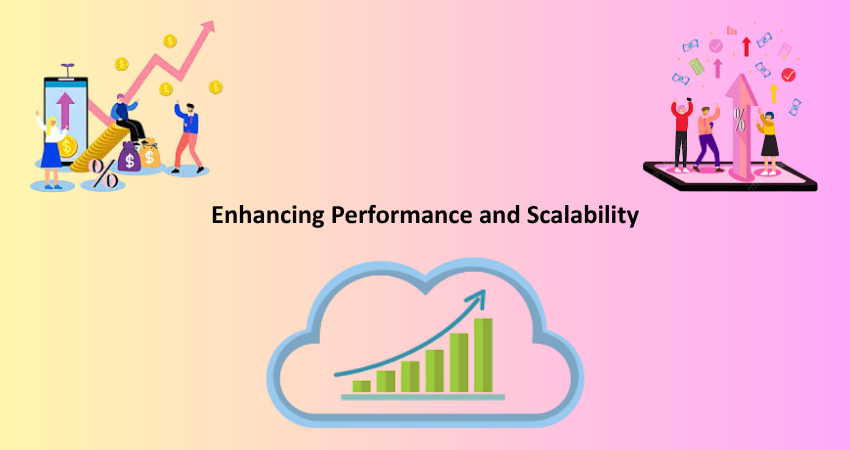
Introduction
Given the known changing nature of back end development, one needs to keep evolving with the new sets of tools and new mechanisms available for data management. A NoSQL, document-oriented database, MongoDB, has become popular primarily because of its ease, flexibility, and scalability. While traditional relational databases such as MySQL or PostgreSQL have their significance, MongoDB makes way for an entirely new approach towards unstructured and semi-structured data. Indeed, for back-end developers creating fast, modern, and scalable applications, knowledge of MongoDB is much beyond advantage; it’s necessity.
In this article, we’re going to look into the many important reasons why back-end developers should bank some time and effort in typing up MongoDB. The purposes that MongoDB serves within performance, models for data, real-time analytics, and its collaboration with JavaScript-based frameworks are demystified in this article. Moreover, job markets increasingly demand MongoDB skills, and how the mastering of this tool would go a long way in bringing their creative vision to life. From RESTful APIs, real-time applications, and cloud-native services, MongoDB will place you in an entirely new league of development in back-end.
Embracing Schema Flexibility in a Dynamic Data World
Modeling Unstructured Data with Ease
An important plus for MongoDB ahs to do with the schema-less design. Unlike conventional SQL databases that enforce a pre-defined table schema even before one can enter any data, MongoDB allows developers to simply insert data into flexible JSON-like documents. This means that down the line, it is possible to modify the structure of the data without the aggro of migration and downtime. A little freedom in a schema is particularly welcome for back-end developers who are always busy with ever-changing or expanding data source.
For example, let’s imagine that you are developing an application that is useful for collecting user feedback, and because of changing requirements, new data fields are created frequently. With MongoDB, you just add those fields to your documents without changing the overall database schema. This saves time while developing and also helps to protect existing features from being broken. The ability to model data as requirements change has an extreme significance to agile development environments.
Supporting Agile Development and Continuous Delivery
Speedy iterations and rapid deployment are hallmarks of Agile methodologies and Continuous Delivery practices. MongoDB with its flexible schema model fits these modes of working very naturally. Developers can quickly implement new features without unnecessary hindrances that come from a rigid definition of schema. This is very advantageous for the microservice architecture, where each microservice can define and manage its own data format without being tightly coupled to the other services.
Moreover, MongoDB fits nicely into CI/CD pipelines and the popular DevOps tool suite for automated testing, deployment, and monitoring of database changes. Such flexibility inherently supports continuous improvement with frequent releases. Learning MongoDB enables back-end developers to align their work more closely with agile principles and to be more effective contributors in fast-paced, cross-functional teams.
Enhancing Performance and Scalability

Leveraging Horizontal Scalability for Large Applications
Fueled with horizontal scaling that is built into the database, MongoDB definitely is concerned with handling the modern-scale applications. Modern relational databases can continue scaling but only up to a certain point; beyond that, they are unable to provide any benefits. This is because MongoDB handles sharding – dissects data into many servers – so robust performance can be enjoyed with lots of data and traffic. Therefore, it high guarantees for a back-end developer when building a platform that will experience high traffic in the future.
Sharding in MongoDB provides the basis for routing the queries to an appropriate shard or shards according to a defined shard key. In such a scenario, a developer knows that the application will be highly responsive even during heavier workloads since the real-time performance will still rely upon intelligent query routing into shards. There is also the replica set feature that MongoDB provides, which can actually ensure redundancy and high availability since applications can still be “up” even with some hardware failures. Understanding how to use these features and implement them practically equips developers toward creating fault-tolerant, scalable systems.
Reducing Latency with Efficient Data Access Patterns
MongoDB’s document architecture facilitates rapid read and write activities by enabling the storage of logically related data within one document and creating fewer complex joins. Hence, it fits the bill for speed-oriented applications like e-commerce platforms, IoT systems, and mobile back-ends. Developers can pull all data relevant to a given activity with just one query thereby leading to substantial performance boost.
Moreover, MongoDB has some indexing options such as compound, text, and geospatial indexes to further optimize queries. Combining these two, caching the frequently accessed data and proper indexing strategies drastically reduce the response time. In back-end development, where user experience optimization tops the chart, MongoDB is an incredible utility, especially to deliver high-throughput applications with low latency.
Integrating Seamlessly with Modern Tech Stacks
Aligning with JavaScript Ecosystems
Data storage in MongoDB uses BSON (Binary JSON), which meshes naturally with JavaScript environments such as Node.js. This development environment syncs the development of applications since developers use one language for server-side applications and another language for client-side applications. As JSON is the format used for data exchange, there is no need to do any conversions-in other words, a simple solution minus the complexity and the bugs that might arise.
Back-end developers working with MEAN/MERN stacks find live advantages of interworking with MongoDB and JavaScript. Most importantly, with very few to no syntax differences, the data can move back and forth seamlessly between the client, server, and database so one can experience rapid development and debugging. A good developer will find MongoDB as an added arrow in his quiver when it comes to building full-stack applications, cutting down on any context-switching.
Facilitating API Development and Real-Time Applications
Well, MongoDB is at its best in API and real-time data-centric environments. The built-in support for geospatial queries, aggregation pipelines, and change streams makes it easier to develop rich feature APIs and responsive applications. For example, change streams allow applications to listen to updates in real time in the database, which can be used for features like live chat, notifications, or activity feeds.
The aggregation framework of MongoDB also performs more complex transformations and analytics on data in the database itself rather than requiring external processing layers in the system, which benefits back-end developers who create dashboards or analytics tools. This will enable developers who have learned MongoDB to create an even more dynamic and interactive user experience with fast and agile data management.
Simplifying Data Management and Operations
Streamlining Deployment with Cloud-Based Solutions
MongoDB Atlas is the official offering on the cloud hosted by MongoDB. Fully managed database service experiences are given on the Database As A Service. By automating provisioning, patching, backups, and monitoring, developers are free to develop applications without having to concern themselves with managing the infrastructure. With its multi-cloud and global distributions, MongoDB Atlas has simplified the scaling and user servicing of an application across regions.
For backend developers, therefore, faster time-to-market and reduced operating costs. DevOps teams can leverage its integration with CI/CD pipelines and cloud platforms like AWS, Azure, and Google Cloud. Learning how to go about deployment and maintenance of MongoDB in the cloud provides essential skills to developers in modern cloud-native development environments.
Enabling Secure and Compliant Applications
Backend development concerns mostly security. MongoDB has solid security features against data loss. Role-based access control (RBAC), encryption at rest and in transit, auditing, and fine-grained permissions are some of the features that help developers to comply with requirements like GDPR, HIPAA, or even SOC 2. MongoDB Atlas adds value with built-in security best practices and automated configuration tools.
By leveraging the knowledge of MongoDB security architecture, back-end developers can create systems that will safeguard sensitive user data and comply with industry standards. Security features are put in the development pipeline to enable developers to build such applications without compromising speed and functionality. Learning MongoDB lays the foundation to create trust where users and stakeholders are concerned about compliance and security of applications.
Expanding Career Opportunities and Market Demand

Growing Demand for MongoDB Skills in the Industry
With an increasing adoption of NoSQL databases to cope with modern data challenges, the demand for MongoDB experts is ever growing. Job postings now often mention having MongoDB knowledge as a requirement or preference mainly for backend roles in startups, fintech, healthcare, and cutting-edge technology organizations. Mastering MongoDB has diversified job opportunities and lucrative earning potential for aspirants.
MongoDB Developer Associate and MongoDB DBA are certifications that are relevant proof of one’s skills and boost the chance of applicants in this highly competitive job market. The extensive documentation provided by MongoDB and the vibrancy of the MongoDB local community make the learning process and practical application of best practices easy. Every investment made into training for MongoDB is a strategic investment into fast-tracking career growth as companies want developers who can build scalable and innovative solutions.
Enhancing Problem-Solving and Design Thinking Skills
Learning MongoDB helps developers to rethink about data modeling and architecture. More so, it tries to dip the normalized relational designs to more application-centric structures because document-based databases. This fosters understanding about how applications will interact with data and encourages solving up-front decisions. Developers learn to juggle performance against scalability balanced with data integrity aligned with modern development needs.
With MongoDB, back-end developers will have a fundamental tool in their belts when addressing real-world problems. Whether that’s developing responsive APIs, working with big data, or implementing real-time capabilities, all of these areas become possible with MongoDB knowledge enabling them to create innovative, high-quality solutions. That mindset transformation is almost indispensable for successful navigation in today’s volatile tech environment, where success lauds flexibility and the capacity to adapt.
Conclusion
With speed and flexibility, MongoDB has become the favorite NoSQL database for application back-end developers. Document-oriented models and integrations with modern tech stacks, coupled with the sustained support for cloud-native deployments, make MongoDB an indispensable skill for 2025 and beyond. Organizations are continuously pushing for agility, performance, and user experience, which puts MongoDB at the forefront of this supportive infrastructure.
In terms of the back-end developer’s experience, MongoDB represents a new approach to data considerations-THAT approach being suitable for contemporary development and the requirements of real-world applications. Henceforth, it is future-proofing-their-skills investment for them, one with expanded job opportunities and the ability to put software into market. MongoDB provides the flexibility, performance, and tooling needed for success through whichever architecture: whether the first RESTful API is being constructed or an entire distributed microservices system.